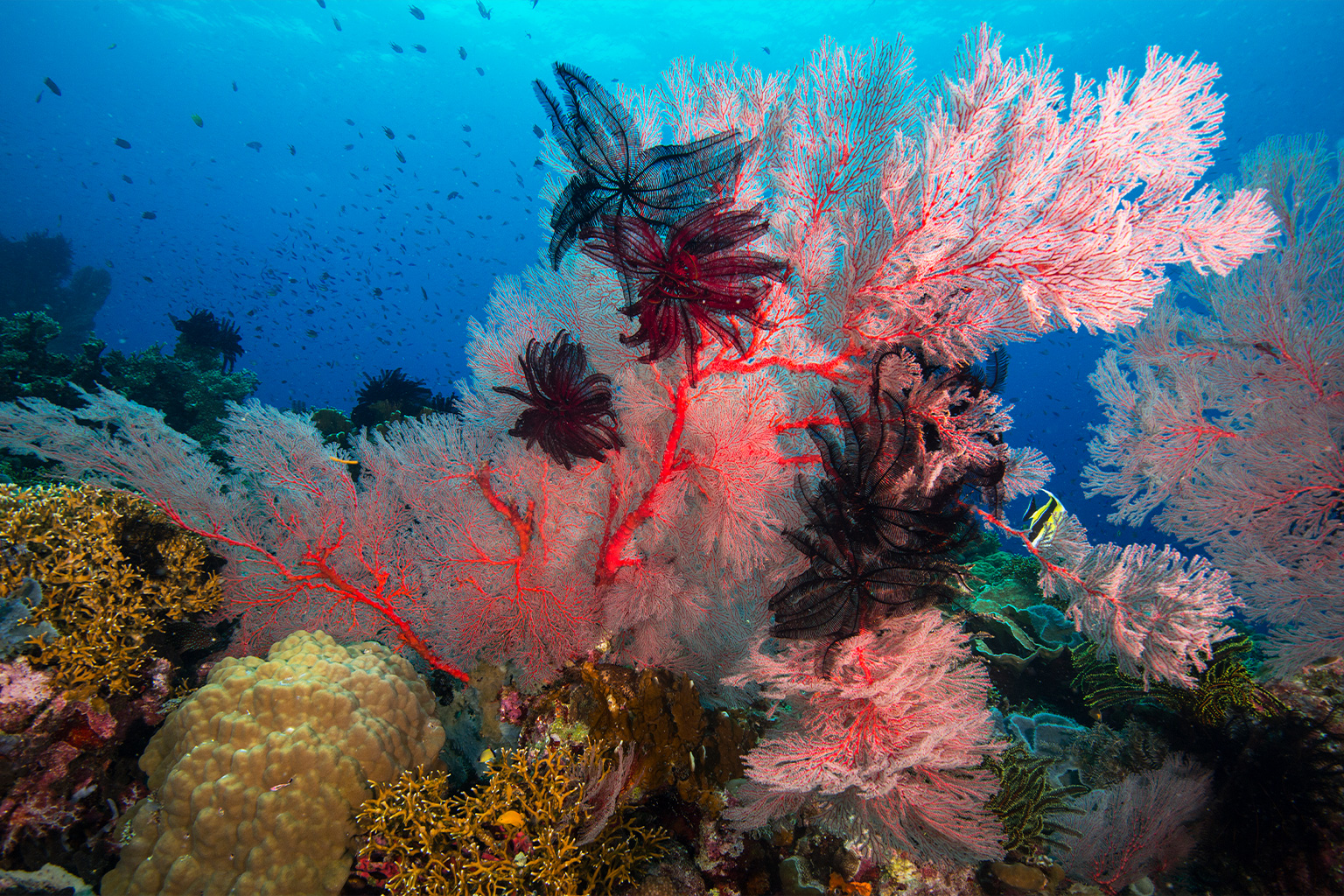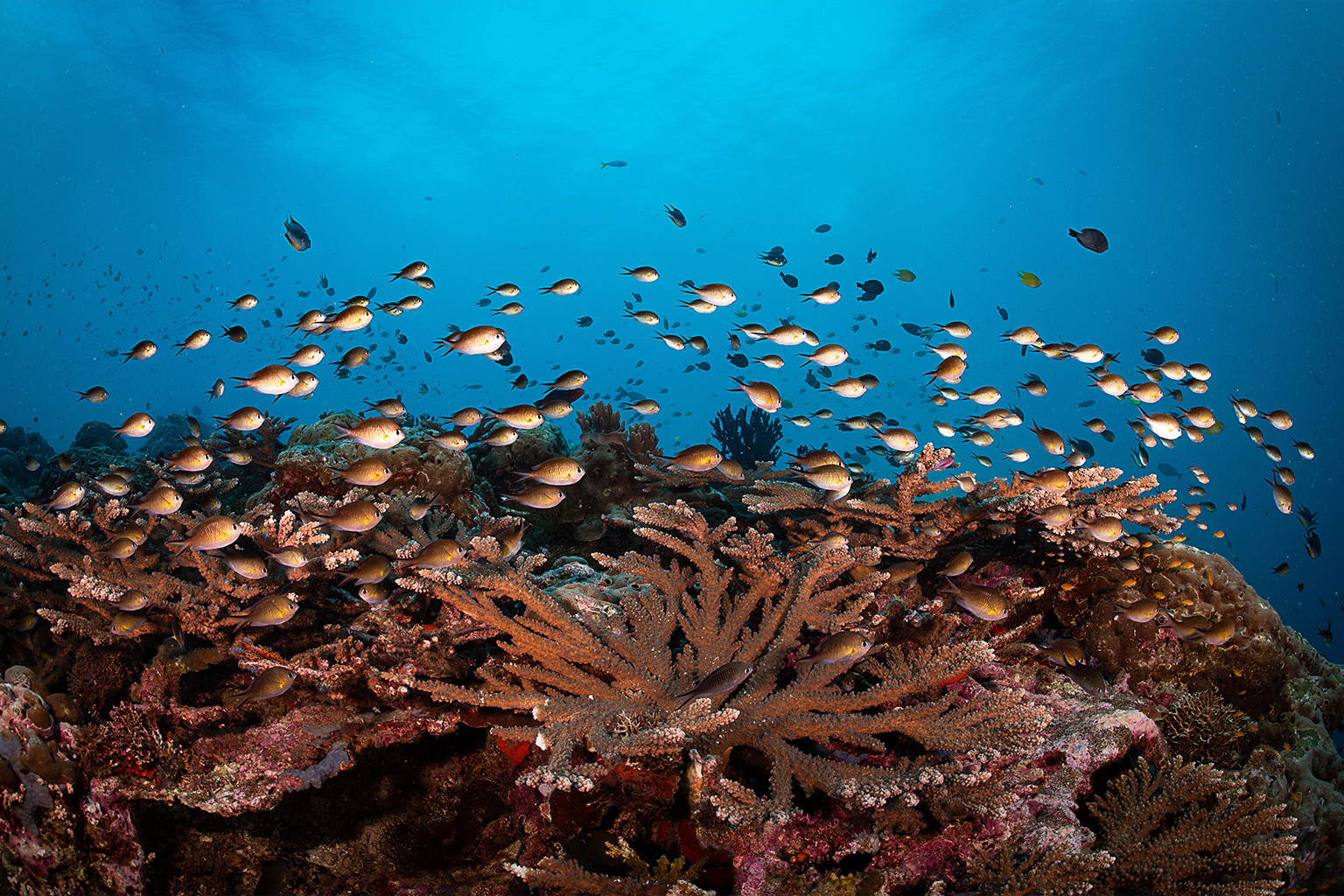- An expedition led by National Geographic’s Pristine Seas project will voyage across the Pacific over five years to gather information about marine ecosystems needing protection.
- The Pristine Seas team will collaborate with Pacific island nation governments, communities, Indigenous and local peoples, and local scientists, to gather data and produce films.
- The first stop of the expedition will be the southern Line Islands, part of Kiribati, to understand how its reefs recovered after an El Niño triggered a large-scale bleaching event in 2015 and 2016.
How do you make people care about protecting marine habitats and wildlife? You tell stories, says Enric Sala, an explorer-in-residence and founder of the Pristine Seas project at the National Geographic Society.
“We need to show people how wonderful and awesome the ocean is, what a miracle it is to have an ocean full of life like we have here on Earth, and once people fall in love with it, then we can feed that love with … facts and statistics and findings and data,” Sala tells Mongabay. “But first, we need to appeal to the hearts before we reach out to the brain.”
On May 24, the Pristine Seas project launched a five-year expedition across the Pacific to gather and tell such stories about the ocean. A team will sail on a specially equipped vessel, the E/V Argo, to identify, document and study marine areas in need of protection, with the ultimate goal of supporting the creation of more marine protected areas (MPAs).

Working in collaboration with Pacific island nation governments, communities, Indigenous and local peoples, and local scientists, the team will explore the ocean through scuba diving, underwater camera systems, and deep-sea submersibles. Not only will the Pristine Seas team gather data, but they will also produce documentary films and short videos for social media.
The first destination of the expedition will be the southern Line Islands, an uninhabited archipelago that’s part of Kiribati, to understand how the reef system was able to make a recovery after an El Niño triggered a large-scale bleaching event in 2015 and 2016, killing about half of the corals. In 2022, Sala and colleagues returned to the southern Line Islands to find that many corals had come back to life.
“It recovered like a phoenix,” he says. “This is why we decided to go to the Line Islands in the first place. It makes a lot of sense, like a full circle from when we started.”
Other planned stops on the expedition include Tongareva in the northern part of the Cook Islands; Niue; the uninhabited atolls of Bikar and Bokak in the Marshall Islands; and Palau. The team reports that many of these places boast ecosystems that appear to be resilient to human-induced climate change and other anthropogenic pressures.
“We’re going to look at everything from the microbial community, high-tech 3D imaging, extensive ecological studies to see if we can understand the processes of why these places are resilient and whether we can apply that elsewhere around the world,” Alan Friedlander, the chief scientist of National Geographic’s Pristine Seas, said on a press call. “During this global expedition, we’re going to use a wide variety of tools from simple to complex. And we’re going to study everything from whales and sharks down to microscopic organisms and even things we can’t see at all, like environmental DNA.”

The mission may also explore areas earmarked for deep-sea mining, such as seamounts, by deploying deep-sea cameras, Friedlander says.
“Seamounts are these oases in the middle of nowhere,” he says. “They’re the treasure troves of biodiversity. They sit out there, they often have unique species that are found nowhere else on Earth, and they’re also really susceptible to any damages. The seamounts just outside of the northwestern Hawaiian Islands were harvested by the Soviet Union back in the [day] still haven’t recovered to this day. So we need to treat these seamounts extremely carefully and cautiously.”
Sala says he’s particularly excited about visiting the southern Line Islands to puzzle out what allowed the reefs to recover from the large-scale warming event several years ago.
This year, scientists are predicting another El Niño event that could potentially raise global temperatures by more than 1.5° Celsius (2.7° Fahrenheit) above pre-industrial levels — the threshold set by the Paris Agreement — and impact marine ecosystems in myriad ways, including the triggering of coral bleaching.
Sala says he’s “definitely worried” about the prediction of a strong El Niño year but that establishing MPAs will “allow us to buy time.”
“A marine protected area cannot make that water cooler, cannot protect from warming,” Sala says, “but what we know is that fully protected areas are more resilient to warming.”

Nainoa Thompson, president of the Polynesian Voyaging Society, who will be taking part in the expedition, says the project will “bring the power of science and technology along with traditions, culture, genealogy, and mesh them together.”
“You bring together the power of science and technology around the wisdom and the genius of native people that have been there for thousands of years,” Thompson said on a press call. “Because in that equation is the gift to the world to better understand how we make better decisions for a better world, for the future security of our children.”
Banner image: Gray reef sharks at Fakarava atoll, French Polynesia. Image by Jayne Jenkins / Ocean Image Bank.
Elizabeth Claire Alberts is a senior staff writer for Mongabay. Follow her on Twitter @ECAlberts.
An El Niño is forecast for 2023. How much coral will bleach this time?
